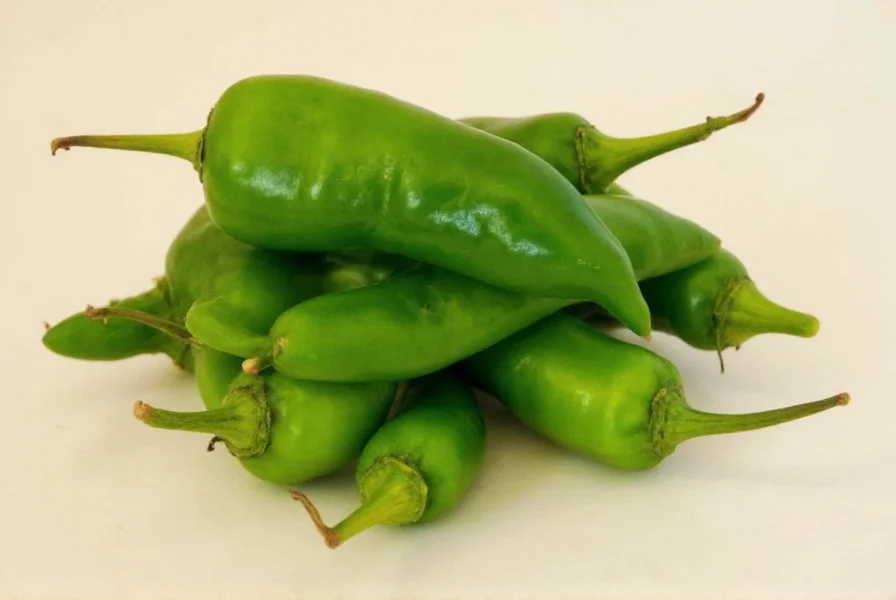Understanding the unique characteristics of chili poblano helps home cooks and culinary enthusiasts incorporate this versatile ingredient effectively. Unlike hotter varieties, the poblano's manageable heat level makes it accessible for diverse palates while delivering complex flavor profiles that elevate both traditional and contemporary dishes.
Physical Characteristics and Identification
Poblano peppers typically measure 4-6 inches in length with a broad, heart-shaped body tapering to a rounded point. Their thick walls distinguish them from thinner-skinned varieties like jalapeños. When immature, they display a glossy dark green hue. As they mature on the vine, they transition through brownish tones to a deep, burgundy red. This color change significantly impacts their culinary applications and flavor profile.

Flavor Profile and Heat Measurement
The poblano pepper heat level ranges from 1,000 to 2,000 Scoville Heat Units (SHU), placing it milder than jalapeños (2,500-8,000 SHU) but with more complexity than bell peppers (0 SHU). When roasted, poblanos develop pronounced earthy and smoky characteristics with subtle fruit undertones. The red-ripe version offers a slightly sweeter profile compared to its green counterpart.
| Pepper Variety | Scoville Heat Units | Flavor Characteristics |
|---|---|---|
| Poblano (green) | 1,000-2,000 | Earthy, mild heat, grassy notes |
| Poblano (red) | 1,500-2,500 | Sweeter, richer, subtle fruitiness |
| Jalapeño | 2,500-8,000 | Grassy, sharper heat, citrus notes |
| Anaheim | 500-2,500 | Milder, slightly sweet, less complex |
Culinary Applications and Traditional Uses
Chefs value chiles poblanos for their thick walls that hold up well to stuffing and roasting. In Mexican cuisine, they star in iconic dishes such as:
- Chiles Rellenos - Roasted, stuffed with cheese or meat, then battered and fried
- Mole Poblano - The foundational chili in this complex sauce featuring chocolate and spices
- Chiles en Nogada - Stuffed peppers topped with walnut cream sauce and pomegranate seeds
When fresh poblano peppers aren't available, understanding best substitutes for poblano peppers becomes essential. Anaheim peppers offer similar mild heat but less complexity. For stuffed applications, cubanelle peppers work well due to comparable size and wall thickness. Bell peppers provide the shape without heat, while jalapeños deliver more spice but lack the earthy depth.
Preparation Techniques for Optimal Flavor
Mastering how to roast poblano peppers unlocks their full flavor potential. The traditional method involves:
- Charring directly over gas flame or under broiler until skin blackens
- Sealing in paper bag for 10-15 minutes to steam and loosen skin
- Gently peeling away blackened skin while preserving flesh
- Removing seeds and membranes (which contain most heat)
This process transforms the pepper's flavor profile, developing rich smokiness while maintaining structural integrity for stuffing. Roasted poblanos freeze exceptionally well, allowing year-round availability of this seasonal ingredient.
Storage and Selection Guidelines
When selecting fresh poblano peppers at grocery stores, look for firm, glossy specimens without wrinkles or soft spots. Store unwashed peppers in the crisper drawer for up to two weeks. For extended preservation, roast and freeze them in airtight containers for up to six months. Dried poblano peppers become anchos, offering a completely different flavor profile suitable for sauces and stews.
Nutritional Benefits
Beyond their culinary versatility, poblano pepper nutritional benefits include significant vitamin C content (more than citrus fruits by weight), vitamin B6, and dietary fiber. They contain capsaicinoids that may support metabolism and provide antioxidant benefits, all while remaining low in calories (approximately 20 calories per pepper).

Common Questions About Poblano Peppers
Are poblano peppers the same as pasilla peppers?
No, they are distinct varieties. Poblanos are fresh, heart-shaped peppers, while pasillas are dried chilacas. When dried, poblanos become anchos, which are sometimes confused with pasillas but have different flavor profiles.
Can I eat poblano peppers raw?
Yes, though their thick walls make them less crisp than bell peppers. Raw poblanos have a grassy, slightly bitter flavor that mellows significantly when cooked. Most culinary applications benefit from roasting or sautéing to develop their characteristic earthy notes.
Why do some poblano peppers taste hotter than others?
Heat variation occurs due to growing conditions, maturity level, and individual plant genetics. Stressors like inconsistent watering or temperature fluctuations can increase capsaicin production. The seeds and white membranes contain the highest concentration of heat compounds, so removing these reduces spiciness.
What's the best way to remove poblano pepper seeds?
After roasting and peeling, cut the pepper lengthwise and use a small spoon to gently scrape out the seeds and white membranes. For raw peppers, slice from the stem end downward, then use your fingers to remove the seed cluster. Wearing gloves prevents capsaicin transfer to sensitive skin.
How do I know when a poblano pepper has gone bad?
Signs of spoilage include soft, mushy spots, visible mold, or significant discoloration beyond normal ripening. Fresh poblanos should feel firm with smooth, taut skin. If they develop a slimy texture or sour smell, discard them immediately.











 浙公网安备
33010002000092号
浙公网安备
33010002000092号 浙B2-20120091-4
浙B2-20120091-4